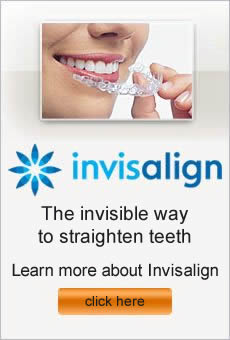If you child is one of the estimated four million children in the United States and Canada undergoing orthodontic treatment, you probably want to know more about orthodontics and why you need to be concerned about this type of dental therapy. It’s also good to understand the purpose of orthodontics in case you or a loved one need treatment in the future. The following questions and answers will offer you valuable information about orthodontic treatment.
Why does orthodontic treatment really matter?
Not only will a gorgeous smile and properly aligned bite make your child feel more confident, but it can also improve dental health. Straight teeth are easier to clean, which reduces the risk for cavities and gum disease.
How will I know if my child needs treatment?
The American Association of Orthodontists (AAO) encourages parents to have their children evaluated by an orthodontist at around age seven. At this point, children have enough permanent teeth for the orthodontist to evaluate how well the teeth and jaws meet, and to identify current or developing issues.
Does my child’s growth impact treatment?
Often, growth and orthodontic therapy work hand-in-hand. In many cases, the orthodontist can capitalize on your child’s growth to move jaws and teeth into their ideal positions.
What is the best way to find an orthodontist?
Various resources exist to help you choose the right orthodontist. Ask friends and family, talk with your child’s dentist, and use the Internet. Once you identify several candidates, schedule consultation appointments so that you can get a feel for the doctor and staff.
Schedule a consult at our orthodontic dental practice in Sherman Oaks, CA – Mehdi Fotovat, DDS
When people think about orthodontics, they usually envision a mouth full of metal. While braces are part of orthodontic treatment, there are other phases as well. Depending on the case, you or a loved one may have several phases of treatment. To determine the right steps for your particular case, the orthodontist will perform a complete evaluation. Children should visit an orthodontist by age seven for a thorough assessment because some problems respond better before growth stops.
Phase One
Usually lasting 6 to 18 months, Phase One orthodontics involves children between the ages of 7 and 10. During this period, the primary goal is to address the position of the jawbone to prevent issues such as large overbites, cross bites, or facial asymmetries. Because this involves movement of underlying bone structure, Phase One is most successful for children who haven’t finished growing.
Phase Two
Most people are familiar with Phase Two treatment, which involves actual placement of braces on the permanent teeth to move them into proper alignment. Usually Phase Two occurs after a child stops developing. When adults decide on orthodontic treatment, it typically falls into this category. Though metal braces used to be the only option for Phase Two, ceramic brackets, lingual braces, and clear aligners enable patients to select from other methods of treatment.
After Braces
Once you finish with the braces, your orthodontist will take impressions for your retainers. These appliances will keep your teeth from shifting back into the old position. Initially, you will the retainers for almost 24 hours a day, but the time will be reduced as your orthodontist monitors your progress.
Experts in the proper placement and alignment of the teeth and jaws, orthodontists help patients of all ages achieve straighter, healthier smiles. If you are considering orthodontic care for yourself or a family member, it’s important to select the right provider. Unlike a general dentist, an orthodontist has an additional two to three years of advanced training.
Orthodontists specialize in:
• Aligning and straightening teeth for proper occlusion using fixed and removable appliances
• Closing gaps between the teeth
• Correcting jaw positioning with external appliances like head gear
• Placing braces and other appliances as part of orthodontic treatment
• Treating over bites, cross bites, and deep bites
When it comes to choosing an orthodontist, you should consider several factors:
Convenience
During your orthodontic treatment, you will visit the orthodontist’s office at least once every four to six weeks, sometimes more often. Close proximity to your office or home will cut down on travel time. At the Mehdi Fotovat DDS, we even offer early morning appointments to fit your busy schedule.
Credentials
As you make your selection, evaluate each candidate’s educational background. Ask about continuing education courses. Does the dentist have training in advanced therapies such as Dentofacial Orthopedics or Invisalign? Dr. Fotovat and Dr. Sands, who are trained orthodontists, have received training in Dentofacial Orthopedics. Our doctors work on not only straightening the teeth, but also on creating harmony between the jaws and facial bones with the surrounding structures
Comfort
An important part of your decision making is picking an office and provider your trust. Visit each practice you are considering to get a feel for the personalities and environment. Do you feel welcome and well-treated? It may help to talk with other patients or hear what friends and family have to say about your possible selections before making the final choice.
At Mehdi Fotovat DDS, we offer free orthodontic consultations. Visit our website to see what sets our office apart from other dentists
First introduced in 1999, Invisalign offers adult patients the chance to enjoy perfect smiles without the discomfort or embarrassment of traditional metal braces. Using a series of clear, custom aligners, the Invisalign system applies gentle pressure to move teeth into the proper position. Often, Invisalign takes only 12 to 18 months, a shorter time frame than regular orthodontic treatment.
Invisalign was originally created for adults that had no ongoing jaw development and all their permanent teeth. Recently, the company has produced Invisalign Teen, designed to address the special needs of younger patients. With Invisalign Teen, non-adult patients can enjoy the flexibility and ease of the clear aligners.
Certain features are specific to Invisalign Teen. For instance, this product has specially engineered eruption tabs, which compensate for erupting second molars. As well, the design incorporates power ridges to help with certain difficult tooth movements, and compliance indicators provide a visual cue of patient wear, allowing orthodontists and parents to monitor their teens.
Points to consider about Invisalign Teen:
• For best results, your teen should wear the aligners 20 to 22 hours a day, taking them out only to eat and brush.
• Your teen will wear each set of aligners for about two weeks and then move on to the next group in the series.
• With Invisalign Teen, there is little maintenance. Your teen will visit the orthodontist approximately every six weeks to monitor progress and to receive the next sets of aligners.
• Oral hygiene is easier with Invisalign Teen because the aligners can be removed for brushing and flossing. Patients also won’t have to deal with broken brackets or lose wires.
HappInvisalign for Teens at Mehdi Fotovat DDS in Valley Village CA
An estimated four million people in the U.S. each year undergo orthodontic treatment. If one of those patients is your teenager, you are probably faced with the daunting task of making sure they take care of their teeth and braces. While kids and teens normally love bright, shiny things, that concept probably doesn’t hold true for their orthodontia. Follow these tips to help your teen have a successful experience while wearing their braces.
Encourage lots of brushing
Individuals without braces are supposed to brush twice a day, so double that number if you are an orthodontic patient. Remembering to brush may not make your teen’s priority list, so offer gentle reminders throughout the day.
Send a travel toothbrush
Because your teen likely spends hours away from home, you should purchase a toothbrush and toothpaste for on the go. Your son or daughter will have a harder time fighting you on this point if you supply the right tools.
Focus on getting between teeth
Though it may be more difficult, your teen needs to floss once a day and focus on reaching between teeth, at the gum lines, and around brackets. Flossing is the best way to combat plaque accumulation.
Schedule professional cleanings
When your teen has braces, regular cleanings are critical. Because they have a harder time getting all the areas spick and span, you should make sure to visit the dentist’s office. The hygienist will be able to remove tartar and any build up on teeth.
Recruit help
Sometimes, teenagers respond better when the information doesn’t come from their parents. Ask your orthodontist and dentist to explain the importance of good hygiene to your child.
Caring for your child’s teeth – Dr. Fotovat – Burbank Orthodontist – WebBraces.com



